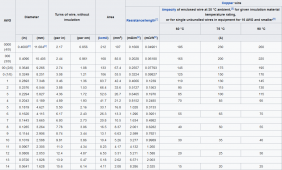Dave (Boog)
New Member
Hi,
I'm trying to decide on buying an inverter. I am probably going to buy one of the Growatt SPF 3000 TL series 48 volt units. I have a question regarding the PV cable size for both units. Unless I missed something, it appears that for the manual for the SPF 3000 TL LVM the says to use a 6 AWG PV cable and for the SPF 3000TL LVM-ES the manual says 12 AWG. I don't understand why a company would construct one of their units to use 6 AWG which to me seems large and another unit to use 12 AWG which seems small.
I am new to Solar but most of the commercially available "PV cables" I have seen are between 10 and 12 AWG. I already purchased 200 feet of 10 AWG PV cable to use on the system I am building. I decided on 10 AWG based on the distance from my panels to my inverter (voltage drop) and the current it would be carrying.
Does anyone have either of these inverters either the SPF 3000 TL LVM or the SPF 3000 TL LVM ES?
If I buy the SPF 3000 TL LVM can I use my 10 AWG PV cable even though it says 6 AWG and tighten it down? If I buy the ES would it be ok to run a short piece of 12 AWG out to XT60 connectors that would connect to my 10 AWG PV cables from my array?
Appreciate any thoughts.
Dave
I'm trying to decide on buying an inverter. I am probably going to buy one of the Growatt SPF 3000 TL series 48 volt units. I have a question regarding the PV cable size for both units. Unless I missed something, it appears that for the manual for the SPF 3000 TL LVM the says to use a 6 AWG PV cable and for the SPF 3000TL LVM-ES the manual says 12 AWG. I don't understand why a company would construct one of their units to use 6 AWG which to me seems large and another unit to use 12 AWG which seems small.
I am new to Solar but most of the commercially available "PV cables" I have seen are between 10 and 12 AWG. I already purchased 200 feet of 10 AWG PV cable to use on the system I am building. I decided on 10 AWG based on the distance from my panels to my inverter (voltage drop) and the current it would be carrying.
Does anyone have either of these inverters either the SPF 3000 TL LVM or the SPF 3000 TL LVM ES?
If I buy the SPF 3000 TL LVM can I use my 10 AWG PV cable even though it says 6 AWG and tighten it down? If I buy the ES would it be ok to run a short piece of 12 AWG out to XT60 connectors that would connect to my 10 AWG PV cables from my array?
Appreciate any thoughts.
Dave



